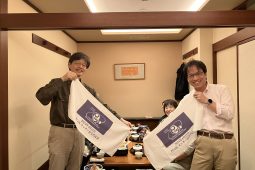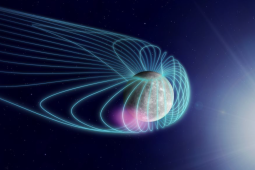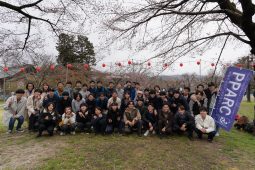PPARCセミナー(2023/12/1)

PPARCセミナー(2023/12/1)
(1)
[Name]
Rikuto Yasuda
[Title]
Ray Tracing for Jupiter’s Icy Moon Ionospheric Occultation of Jovian Auroral Radio Sources & Developing Plan for 3D Ionospheric Occultation
[Abstract]
(English)
1. The ionospheres of icy moons have been observationally detected by in-situ plasma measurement and radio occultation. However, the spatial structures are not fully characterized yet. To address this, we developed a new ray tracing method for modeling radio occultation of the ionospheres of Jupiter’s icy moons using Jovian auroral radio sources. Applying our method to existing radio observations with the Galileo spacecraft, we derived electron density of the ionosphere of Ganymede and Callisto. For the Ganymede ionosphere, we found that maximum electron density on the surface is 150 cm-3 in open magnetic field line regions and 12.5 cm-3 in a closed magnetic field line region during Galileo Ganymede 01 flyby. This electron density distribution correlates with the flux distribution of plasma precipitation from Jovian magnetosphere. It indicates that electron-impact ionization of the Ganymede exosphere and sputtering of the surface water ice are effective for the production of Ganymede’s ionosphere. For the Callisto ionosphere, we found that the density is 350 cm-3 and 12.5 cm-3 on the night-side hemisphere during Callisto 09 flyby and 30 flyby. These results suggest that atmospheric production through sublimation controls the ionospheric density distribution of Callisto. This method is also applicable to upcoming Jovian radio observation data from the Jupiter Icy Moon Explorer, JUICE.
2. Our occultation method is based on the assumption of a spherically symmetric ionosphere. However, as suggested by previous model studies, the ionosphere has a more complex and asymmetric shape due to the effects of Jupiter’s magnetospheric plasma and solar illumination. Therefore, we plan to develop our method so that it can be applied to asymmetric ionospheres. Today, I want to present and discuss the ideas and plans for this application.
(日本語)
1. 氷衛星の電離圏は、その場観測や電波掩蔽法によってこれまで観測的されてきた。しかし、その空間的な構造はまだ十分には明らかにされていない。そこで、木星のオーロラ電波を用いて、木星氷衛星の電離層の電波掩蔽をモデル化する新しい光線追跡法(レイトレーシング法)を開発した。ガリレオ探査機による既存の電波観測結果にこの手法を適用し、ガニメデとカリストの電離層の電子密度を導出した。ガニメデの電離層については、Galileo Ganymede 1のフライバイ時に、磁力線が開いている領域で150cm-3、磁力線が閉じている領域で12.5cm-3の最大電子密度が観測された。この電子密度分布は、木星磁気圏からのプラズマ降下のフラックス分布と相関がある。このことから、ガニメデの電離層の生成には、ガニメデ外気圏の電子衝突電離と表層の水氷のスパッタリングが有効であることがわかった。カリストの電離層については、Calisto09フライバイとCaliesto30フライバイにおいて、夜側半球で密度が350cm-3と12.5cm-3であることがわかった。これらの結果は、昇華による大気生成がカリストの電離層密度分布を制御していることを示唆しています。この方法は、木星探査機JUICEの木星電波観測データにも適用可能である。
2. 自身が開発した掩蔽手法は、球対称の電離圏を仮定して密度の導出をおこなっている。しかしながら、従来のモデル計算によって示唆されているように、木星磁気圏プラズマの流入や太陽照射の影響により氷衛星の電離圏はより複雑で非対称な形をしている。よって、非対称な電離圏においても本手法を適用できるように開発を進める予定である。この適用に向けたアイデアと計画を紹介する。
(2)
[Name]
Masato Kagitani
[Title]
Changes in structure of Io plasma torus observed in 2018 and 2020
[Abstract]
Volcanic gases (mainly composed of SO2, SO and S) originating from jovian satellite Io are ionized by interaction with magnetospheric plasma and then form a donut-shaped region called Io plasma torus. Ion pickup is the most significant energy source on the plasma torus through, distribution of pick-up region and its variability is still unclear. In this study, we focus on changes in structure of Io plasma torus observed in 2018 and 2020. The ground-based observation of sulfur ion emission, [SII] 671.6 nm and 673.1 nm was made starting from March 2018 at Haleakala Observatory in Hawaii using Tohoku 60-cm telescope and DMD coronagraph. We found events in which the radial distribution of [SII] emission expands at specific longitudes in 2018 and 2020. We will present the expected 3D structure during the event, and will discuss possible scenario of the event. We will also introduce the latest observation status in Hawaii.





